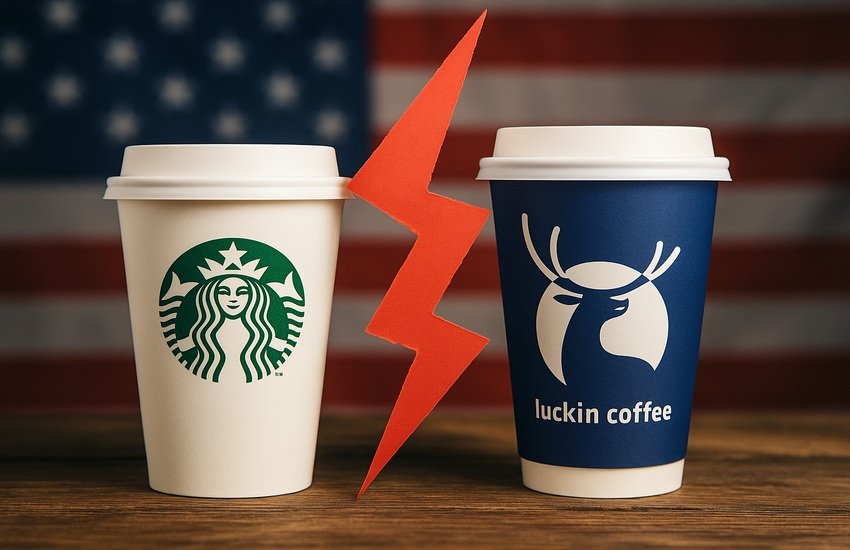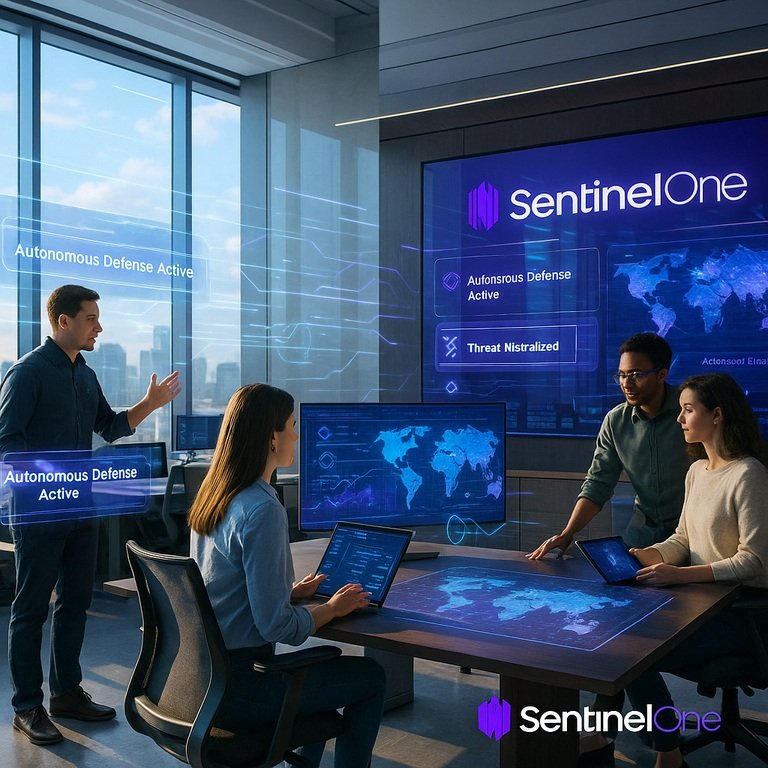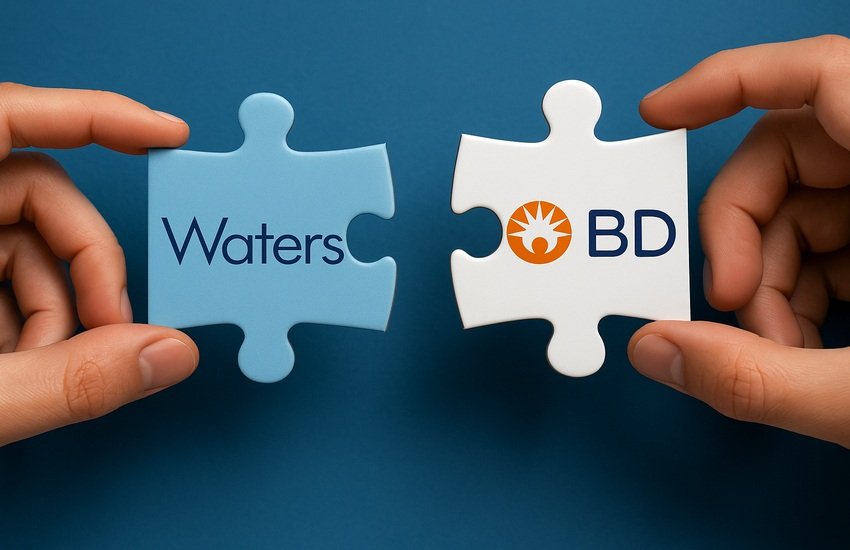Continue Reading With Our 7-Day Free Trial
In a move few saw coming, China’s Luckin Coffee has re-entered the U.S. market with strategic intensity, launching its first American stores just blocks away from established Starbucks locations in Manhattan. The company, once nearly written off after a 2020 accounting scandal, is now reemerging as a formidable competitor. Armed with a mobile-first strategy, rapid service, and rock-bottom pricing, Luckin’s resurgence poses an unexpected challenge to Starbucks at a time when the latter is undergoing a strategic overhaul to arrest declining same-store sales. While Starbucks still boasts 17,000 U.S. stores versus Luckin’s two, history is a warning—Luckin overtook Starbucks in store count in China within six years. As Starbucks attempts to stabilize performance under its “Back to Starbucks” strategy and regain customer affinity, it may find itself outpaced in agility and digital adoption by this leaner, tech-native disruptor. The battle for coffee dominance in the U.S. has a new contender, and it isn’t backing down.
Luckin’s App-Centric Model Redefines Convenience
Luckin Coffee’s primary weapon in challenging Starbucks isn’t just its coffee—it’s the company’s seamless, app-first customer journey. Every transaction is routed through its mobile app, offering precise pickup times, order customization, and real-time updates. What sets the app apart is not just functionality but addictive engagement, driven by coupon gamification and behavioral incentives—a strategy ubiquitous in Chinese retail but still nascent in the West. New customers in New York are enticed with $1.99 lattes, disrupting the $5–$6 price point norm Starbucks operates within. Unlike Starbucks, which is still trying to refine its mobile order flow to prevent overcrowding and maintain the premium in-store experience, Luckin has embraced a purely grab-and-go model with minimal human interaction. Customers receive their drinks in minutes—often faster than Starbucks’ digital orders during peak hours. This efficiency, fused with aggressive pricing and tech-enabled promotions, helps Luckin appeal to price-conscious urban professionals. The app’s tight integration with inventory and pickup logistics also boosts throughput without increasing floor space or labor intensity, making the model highly scalable. By embedding the coffee ritual into a gamified, app-driven routine, Luckin is not just selling coffee; it’s training habits. And that digital-first loyalty, once formed, could prove difficult for legacy brands to disrupt.
Aggressive Pricing Strategy Alters Customer Expectations
Luckin’s bold pricing approach strikes at Starbucks’ core value proposition—premium coffee with a lifestyle experience. In cities like New York, where a Starbucks iced latte routinely costs $6, Luckin’s near $2 offering has stunned customers without sacrificing product variety or speed. It’s a deliberate playbook Luckin used successfully in China: rapid market penetration via ultra-competitive pricing, minimalistic store footprints, and a mobile-first experience. In the U.S., where inflation has dulled consumer appetite for luxury-priced coffee, this strategy has fresh appeal. Starbucks, in contrast, is moving away from discount-heavy marketing to protect brand equity and maintain margins, even as it battles traffic declines. That means Luckin is able to undercut Starbucks without direct retaliation. By reframing expectations around what quality coffee should cost, Luckin risks commoditizing the category that Starbucks once premiumized. Meanwhile, Starbucks’ high operating costs, labor intensity, and slower innovation cycles limit its ability to compete on price. For budget-conscious consumers—particularly non-rewards members who are disengaged from Starbucks’ loyalty ecosystem—Luckin represents a value alternative that is fast, functional, and frictionless. If Luckin can scale while maintaining operational efficiency, it could recalibrate the U.S. market’s pricing dynamics and force Starbucks to reconsider its premium-first strategy.
A Minimalist, Scalable Store Model Drives Speed & Profitability
Luckin’s store design philosophy is optimized for digital ordering and operational efficiency, in stark contrast to Starbucks’ traditional emphasis on ambiance and in-store experience. By minimizing square footage and eliminating the need for cashier interaction, Luckin dramatically reduces overhead costs, improves order speed, and increases transaction throughput. This lean model is what allowed Luckin to explode across China in record time—and the same playbook is being adapted for the U.S. Each store functions more like a micro-fulfillment hub than a café, serving multiple orders per minute through high-volume, low-friction workflows. Starbucks, meanwhile, is undergoing a slow and costly reinvention of its physical footprint, attempting to reestablish its cafes as “third places” while piloting new service algorithms and rethinking its equipment deployment. The company has paused its expensive Siren System rollout and is shifting toward labor optimization and store design uplifts to control capital expenditure. But these changes are being scaled gradually—Starbucks aims to roll out its new Green Apron service model to just one-third of U.S. stores by fiscal year-end. Luckin’s model sidesteps this complexity entirely. With fewer labor demands, quicker build-outs, and a purely digital interface, Luckin’s unit economics allow it to expand rapidly without the baggage of legacy store formats or high per-store CapEx. This scalability could give it a long-term margin advantage over Starbucks, especially in high-rent urban centers.
Starbucks’ Brand Equity Is Being Challenged At The Margins
Despite being a global icon, Starbucks is struggling to convert brand strength into traffic growth. In the most recent quarter, Starbucks reported a 1% global comp sales decline and EPS of $0.41, down 38% year-over-year—figures that fall far below the company’s historical performance. While the company is doubling down on its “Back to Starbucks” strategy—focused on partner support, store redesign, marketing, and menu innovation—the turnaround is still in early stages. Turnover has improved, and early pilots on staffing and sequencing are showing promise, but scale deployment will take time. In contrast, non-rewards customer traffic remains soft, and morning daypart recovery is slow. Simultaneously, Starbucks has distanced itself from heavy discounting, resulting in short-term transaction drag. These strategic moves, while rational long term, may leave Starbucks vulnerable in the near term to lower-cost disruptors like Luckin. The company’s heavy fixed costs, premium pricing, and slower operational agility make it hard to pivot quickly. Moreover, its mobile ordering experience—once an advantage—is now being criticized for congestion and a lack of seamlessness, the very problems Luckin has solved. Starbucks’ forward P/E now exceeds 37x with an EV/EBIT of 30x, suggesting that much of its recovery is already priced in. Without stronger near-term momentum, the risk is that investors may begin to question the pace and effectiveness of the turnaround, particularly as leaner rivals gain ground with younger, value-conscious customers.
Key Takeaways
Starbucks is at a pivotal juncture. Its foundational strengths—brand recognition, global scale, and deep customer loyalty—remain intact, but its operating model is under pressure from a new generation of tech-native, price-aggressive competitors like Luckin Coffee. Luckin’s resurgence, powered by its efficient app-centric platform, value pricing, and minimalist stores, highlights the shifting preferences of urban consumers in a post-pandemic, inflation-sensitive economy. Starbucks’ recent strategic reset through the “Back to Starbucks” plan addresses key structural issues, but its pace of execution must match the urgency of this evolving threat. While Starbucks trades at elevated forward multiples—37x P/E, 30x EV/EBIT—these valuations hinge on a successful, broad-based turnaround. In contrast, Luckin, while still recovering from its past missteps, is demonstrating solid operating performance trends without the drag of a legacy cost structure. The relative valuation gap underscores both market confidence in Starbucks and the risk of underestimating Luckin’s disruptive momentum. As the coffee wars intensify, the outcome will likely hinge on who adapts faster—not who arrived first.





